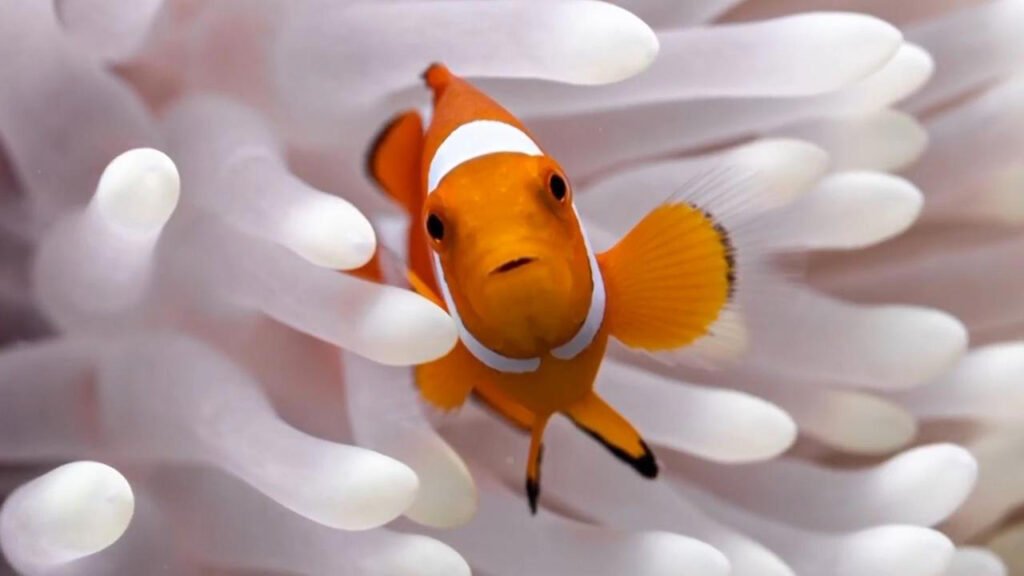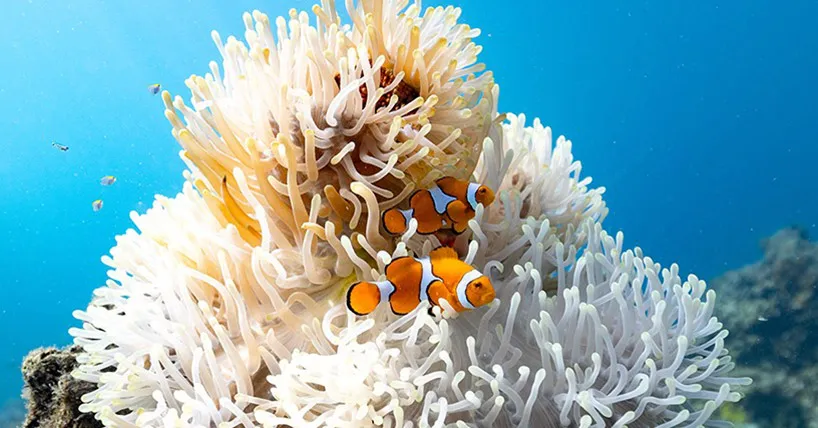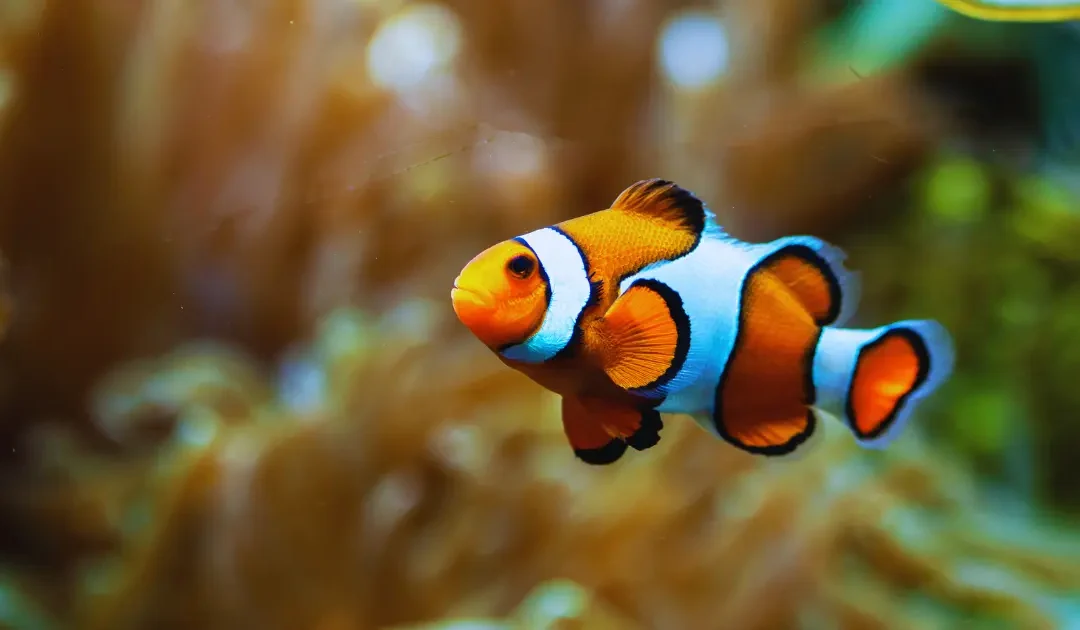Clownfish Ocean Heat Adaptation: Shrinking as a Climate Warning

Clownfish ocean heat adaptation is driving these vibrant reef fish to shrink in size as marine heatwaves worsen due to climate change. Known for their bright orange and white stripes, clownfish are now evolving rapidly to survive rising ocean temperatures. Recent studies in 2023 revealed that clownfish living on coral reefs significantly reduced their size during extreme heat events—a surprising discovery that sheds light on how marine species cope with environmental stress.
Marine Heatwaves and Clownfish Size Reduction
Researchers studying clownfish ocean heat adaptation documented populations living in coral reefs around Kimbe Bay, Papua New Guinea, during the scorching summer of 2023. As ocean temperatures soared, causing widespread coral bleaching, the delicate ecosystem that clownfish depend on was disrupted. Throughout this period, scientists observed a dramatic reduction in the physical size of clownfish—both in length and weight—highlighting a clear example of clownfish ocean heat adaptation in response to environmental stress.
Quantifying the Shrinkage: Measurable Adaptation

Over 75% of clownfish studied experienced size reduction at least once during the heatwave. Unlike mere weight loss from food scarcity, these fish actually shortened in length by several millimeters. The findings suggest a metabolic adaptation where the fish reduce their size to consume less oxygen and food, thereby increasing their survival odds under heat stress.
Biological Strategy: Metabolic Downscaling in Clownfish Ocean Heat Adaptation
Dr. Theresa Rueger, a senior lecturer in tropical marine science, explained that clownfish are undergoing a physical transformation—not simply losing fat, but actively modifying body composition. This strategy is likely a defense mechanism to conserve resources. Similar processes have been observed in other species like marine iguanas, where body tissues are reabsorbed to reduce metabolic demand.
Why Clownfish Matter: Ecosystem Indicators in Clownfish Ocean Heat Adaptation
Clownfish serve as an important species within coral reef ecosystems. Their health reflects broader environmental conditions. When clownfish shrink in response to climate stress, it signals potential distress across the food chain. As reefs bleach and degrade, the biological feedback loops in these ecosystems may spiral toward collapse.
Global Implications for Marine Life in Clownfish Ocean Heat Adaptation
This phenomenon is not isolated. Researchers point to a growing trend where various animal groups—including birds, insects, and reptiles—are altering their body sizes in response to climate stress. The clownfish case is particularly compelling because it demonstrates a rapid and measurable change within a single season.
Evolution or Emergency? Clownfish Ocean Heat Adaptation at a Critical Crossroads
While the ability to shrink suggests adaptability, scientists caution that it may be a short-term solution. Shrinking may impair reproduction, competitive ability, or predator evasion. Over generations, it’s unclear whether this adaptation will persist or if it signals a population under severe pressure.
Clownfish as Climate Messengers

The symbolic weight of clownfish, made popular by animated films, makes them ideal ambassadors for marine conservation. As public icons, they can help raise awareness about the real-time effects of climate change on biodiversity. The notion of “shrinking Nemo” adds a powerful visual metaphor to the climate crisis.
Coral Reefs and the Domino Effect
As coral reefs continue to bleach and die due to rising sea surface temperatures, species like clownfish that rely on them are caught in a life-or-death struggle. Reefs provide food, shelter, and breeding grounds. Their decline disrupts an entire web of marine organisms, emphasizing the interconnected nature of ocean ecosystems.
Technological Advances in Marine Observation
This breakthrough was made possible through advanced underwater monitoring equipment and repeated measurement of tagged clownfish. The precision of these tools allowed researchers to detect subtle changes in fish morphology that may have gone unnoticed in the past.
Future Research Directions
Ongoing studies aim to understand whether clownfish can recover their size once heatwaves subside and if similar changes are observed across multiple generations. Scientists are also exploring the genetic basis for this size plasticity and whether it can be passed to offspring.
Adaptation or Extinction?
The line between adaptation and decline is thin. While size reduction helps fish survive short-term heat stress, it may not be sustainable. Smaller body sizes can reduce mating success and increase vulnerability to predators. If heatwaves become more frequent and intense, clownfish may struggle to maintain healthy populations.
What We Can Learn
The case of the shrinking clownfish highlights how even the smallest creatures are dramatically affected by human-driven climate change. It underscores the urgency of reducing greenhouse gas emissions and protecting marine biodiversity through policy, innovation, and conservation efforts.
Action Steps for Conservation
- Strengthen marine protected areas around biodiversity hotspots like Kimbe Bay.
- Reduce carbon emissions through national and global climate agreements.
- Support coral restoration projects to preserve clownfish habitats.
- Educate the public using symbolic species like clownfish to convey environmental urgency.
The Future of Nemo
Clownfish are not just movie stars—they are climate survivors. Their ability to shrink in response to heatwaves is remarkable, but it’s also a red flag. As oceans warm and reefs vanish, species like clownfish face an uncertain future. Understanding their response to stress offers critical clues in the fight to preserve marine life.




